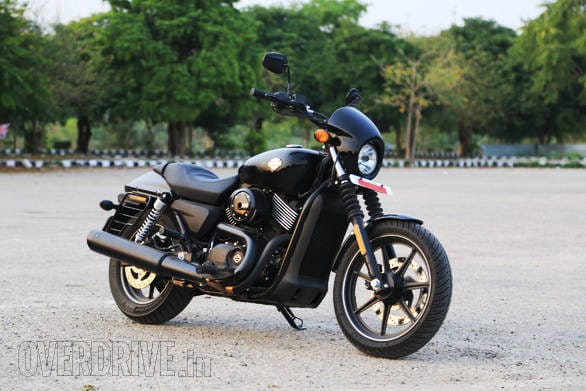Harley-Davidson's Frank Savage explains the idea behind the Street 750
OVERDRIVE's Executive Editor Shumi recently caught up with Harley-Davidson's industrial designer Frank Savage who spearheaded the design and development of the new Street platform.
Shumi: How did the process of designing the Street 750 begin?

FS: It is exciting, first of all, to be a part of a whole new platform again. It took 14 years for us to get there. Bottom-line was totally customer-led.  It's been one of the most extensive research projects. We had a tonne of customer data upfront. Our marketing team scoured the globe, asking what urban youth, the urban dwellers that are aged 18-34 years, what did they want in a Harley-Davidson middleweight?
At the high level they came up with three basic themes:
- Â Urban bike
- Authentic
- Dark Custom Soul
Urban meaning they wanted an agile bike. Maneuverability. They wanted a suspension that can take potholes and speed bumps, agility and maneuverability so that they can get around cars quickly.  They needed a powertrain that can handle the extremes of temperatures across the globe, but also that can stop & go in the traffic.  So the liquid-cooled Revolution X supplies that.
Authentic: These customers didn't want to compromise any of the fit and finish or the materials used on Harley-Davidson motorcycles. They want steel fenders, steel gas tank, exposed metal -- no compromise.
Dark Custom Soul: The customers respect Harley-Davidson. They're looking at their grandfather, their father or their uncle with an Harley-Davidson. It maybe not their expression, they like it but it's not them, that's where dark custom comes in.  Giving them a blank canvas, a dark canvas for them to start personalising.
Shumi: How does the process of designing a platform like that start? Â
FS: Once we have that data, we synthesize it. We get the specs then. The wheelbase, and we know that it is going to look like a cruiser. We are not building a standard. We know that the vehicle is going to have the heart and soul of a Harley cruiser.  But we have to work with the suspension to meet the urban environment, so it's got to have some travel.
With four plus inches of travel on the rear, so that it can handle some stuff. So that became a challenge.  Then we look at our archives. H-D museum at Milwaukee. We look at our motorcycles, look at fit and finish across the years. We look at the tank design, how that's evolved, the engine design. In the Street, we looked at the visual DNA of the Harley-Davidson bikes and brought forward certain visual cues, and then we contemporised them.
The new dew-drop tank on the Street, for instance, is a combination of the 1946 tear-drop tank and a knuckle head, and the 1948 peanut tank, and jammed it together to create a new tank. And the contemporary portion to that are the highlights you see as it cascades around and the bottom cut of the tank instead of being horizontal is at an angle. So we have this elegant historical reference blended into something new in the tank.
The seven-spoke cast wheels are direct inspiration from the 1977 Cafe Racer. We don't have to reinvent  the wheel, if you may, every time.
Shumi: So once you guys are done, the motorcycle goes to the production  guys?
FS:Â It is not once you guys are done. Once we are done defining the essence or the intent of the bike, then we are working in clay to ensure that the tank is sitting tightly on the chassis and from the side view kind of cuts the engine and make the engine feel like it's a caged beast.
Those proportions had to be maintained as we collaborated with the engineering. It's not draw over the wall and say please do this. It's a constant back and forth because sometimes the designer desires a certain fit and maybe it is not attainable with the realities of the fuel pump, the frame. So then we go back and say, 'Ok. We can tweak a little bit and still not lose our intent. So it requires constantly working together. From Day 1 engineering is involved.
Shumi: This is the first time you have worked on a platform that you knew will be produced outside Milwaukee
FS:Â The company was very prescriptive on it's going to be a new middle-weight for a new customer and we are going to expand our horizons and reach out because as the world goes global, we don't want to be left behind.
Shumi: If you were to buy a Street 750, what would you do to customize it?
FS:Â First of all I will live with it for a while. I appreciate it and will take my time. It's a personal journey. Probably what I'll do is start taking off things that frustrated me as a designer. For instance, the license plate holder is hard for a designer to make perfect because literally we don't want license plates on motorcycles.
Watch our first ride of the Harley-Davidson Street 750